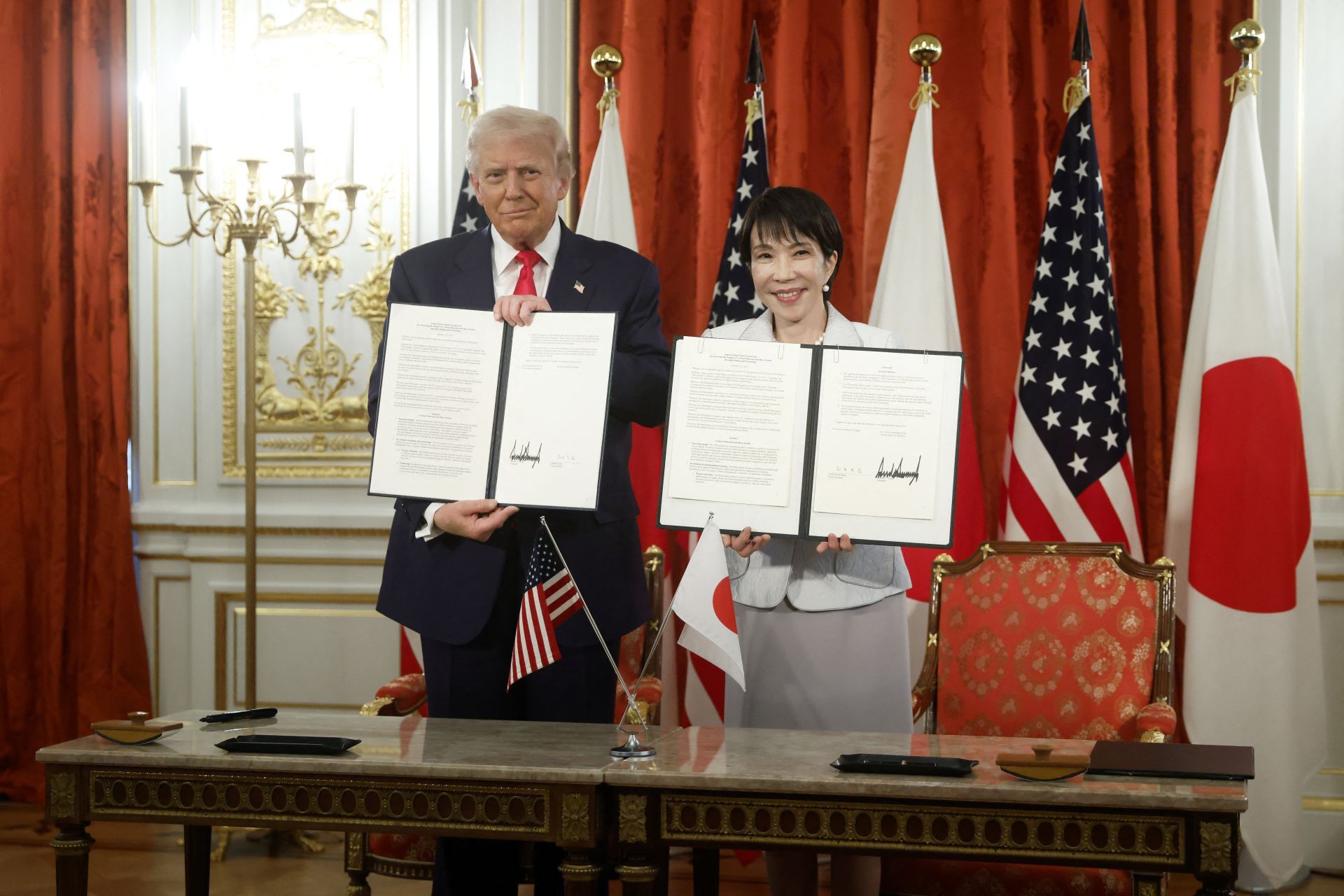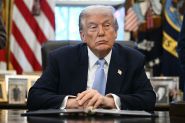- Home
- Middle East
- Donald Trump’s Rare Earth Diplomacy

US President Donald Trump and Japanese Prime Minister Sanae Takaichi pose during a signing ceremony for an agreement on critical minerals and rare earths at the Akasaka State Guest House in Tokyo on October 28, 2025. ©KIYOSHI OTA / POOL / AFP
Donald Trump is taking aim at China’s dominance over rare earths, the invisible metals that power everything from smartphones to missiles. His goal: to free the global economy from its dependence on Beijing and secure US access to these critical resources.
What Are Rare Earths?
Despite their name, rare earths are 17 metals, including manganese, lanthanum, and cobalt – essential for magnets, batteries, wind turbines, electric motors and weapons systems. They are not especially rare in the Earth’s crust, but extracting and processing them is complex, costly, and highly polluting. This explains China’s dominance, built over decades of investment in the refining chain.
Beijing Lifts Its Restrictions
China announced a one-year suspension of its export restrictions on rare earth technologies on Thursday. The move, following a direct meeting between Trump and Xi Jinping in South Korea, temporarily eases a major trade crisis.
“There is now no blockage on rare earths,” said the US president, calling it a “global agreement.”
China produces over 60% of the world’s rare earths and refines nearly 90%, giving it a near-monopoly and significant geopolitical leverage. “China uses its market control as a geopolitical tool,” says Darryl Cuzzubbo, CEO of Australian mining company Arafura Rare Earths. “But within three to five years, it will begin to lose that power,” thanks to agreements between the US and its allies to build extraction and refining capacities outside China’s influence.
A Mineral Diplomacy
Capitalizing on a thaw in relations with Beijing, Trump has accelerated bilateral agreements to secure US access to critical resources. He signed a strategic partnership with Japan in Tokyo, an agreement guaranteeing US access to Malaysian reserves in Kuala Lumpur, and a major pact with mineral-rich Australia in Washington.
The deals include industrial cooperation, joint financing, and the creation of supply chains outside China. For Trump, controlling these resources is a matter of national power. His series of agreements is redrawing the global mineral map, positioning the United States as a central player once again.
Brazil, the world’s second-largest holder of reserves after China, is also seeking to benefit from this reshaping of the market.
G7 Seeks Autonomy
These initiatives come ahead of the G7 Energy Ministers’ meeting on Thursday in Canada, where industrialized nations are working to diversify their supply sources.
“The heavy concentration of refining in a single country poses a national security risk,” warns Tae-Yoon Kim, an expert at the International Energy Agency.
A Critical Minerals Action Plan has already been launched to expand production in allied countries, an effort reminiscent of the 1970s drive to reduce dependence on oil.
But the path ahead is challenging. As one G7 diplomat notes, “China spent thirty years building its rare earths' empire. The West hopes to break free in five.”
Read more




Comments